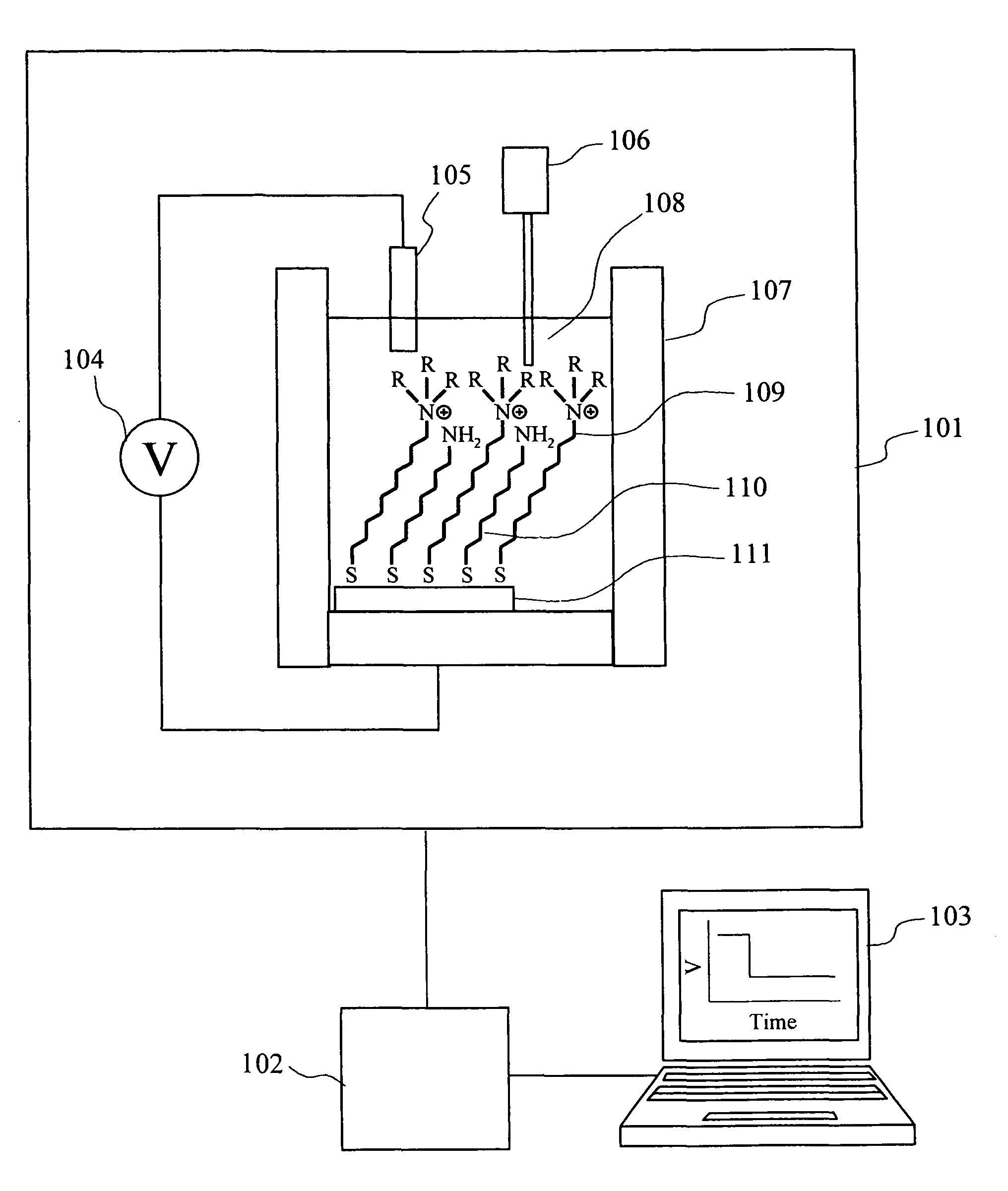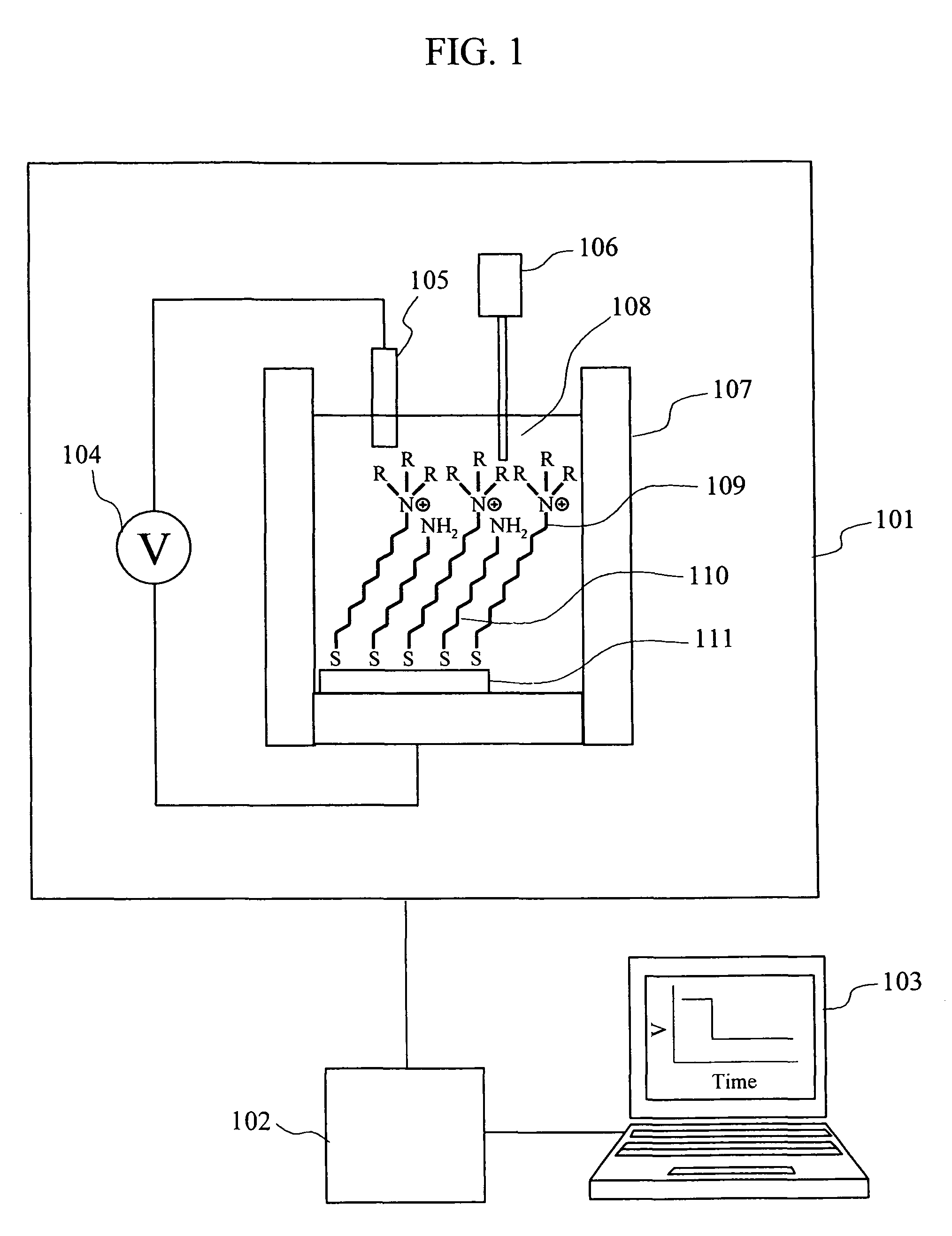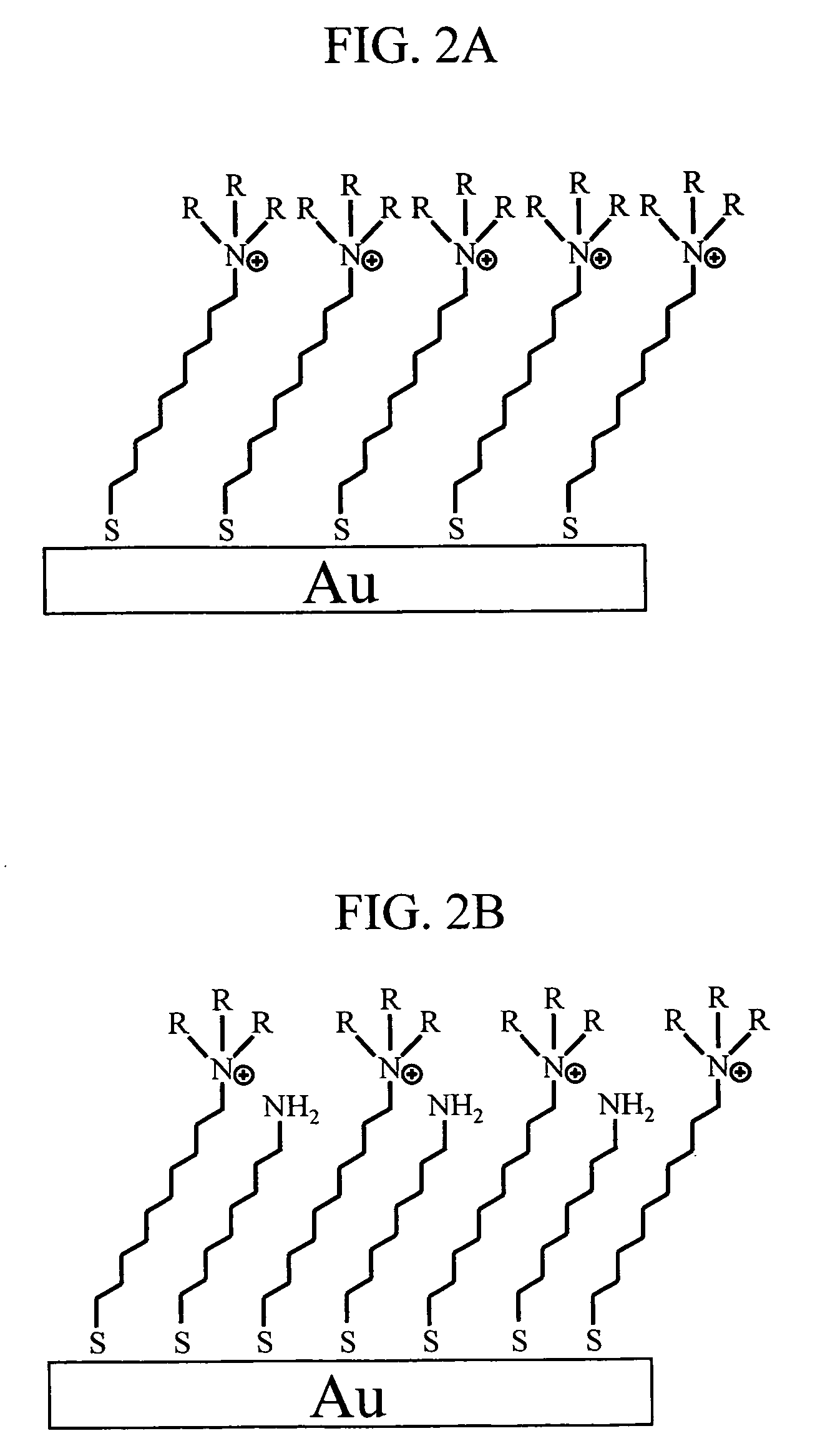Anion concentration measuring device and anion concentration measuring element
a technology of anion concentration and measuring device, which is applied in the direction of liquid/fluent solid measurement, instruments, electrochemical variables of materials, etc., can solve the problems of narrow concentration measurement range and inability of conventional ligand-immobilized ion-selective electrode to stably measure interface potential, etc., to achieve stably measuring electromotive force, reduce leakage current, and reduce the effect of response speed
- Summary
- Abstract
- Description
- Claims
- Application Information
AI Technical Summary
Benefits of technology
Problems solved by technology
Method used
Image
Examples
Embodiment Construction
[0023]Embodiments of the present invention will be described with reference to the drawings, hereinafter.
[0024]FIG. 1 is a block diagram indicating one example of an ion concentration measuring device according to the present invention. The measuring device in this embodiment includes a measurement section 101, a signal processing circuit 102, and a data processor 103. The measurement part 101 includes a potentiometer 104, a reference electrode 105, a sample solution injector 106 that supplies a sample solution having an analyte, and a measurement cell 107. The reference electrode 105A and a gold electrode 111 to which a quaternary ammonium salt derivative 109 serving as a ligand for an anion and an alkanethiol 110 having an amino group at its terminal are immobilized, are arranged in a measurement solution 108 in the measurement cell 107. FIG. 2 shows one example of an immobilization method of a ligand to a gold electrode. FIG. 2A shows a case where only a ligand is immobilized; an...
PUM
| Property | Measurement | Unit |
|---|---|---|
| size | aaaaa | aaaaa |
| thickness | aaaaa | aaaaa |
| electrode potential | aaaaa | aaaaa |
Abstract
Description
Claims
Application Information
 Login to View More
Login to View More - R&D
- Intellectual Property
- Life Sciences
- Materials
- Tech Scout
- Unparalleled Data Quality
- Higher Quality Content
- 60% Fewer Hallucinations
Browse by: Latest US Patents, China's latest patents, Technical Efficacy Thesaurus, Application Domain, Technology Topic, Popular Technical Reports.
© 2025 PatSnap. All rights reserved.Legal|Privacy policy|Modern Slavery Act Transparency Statement|Sitemap|About US| Contact US: help@patsnap.com



